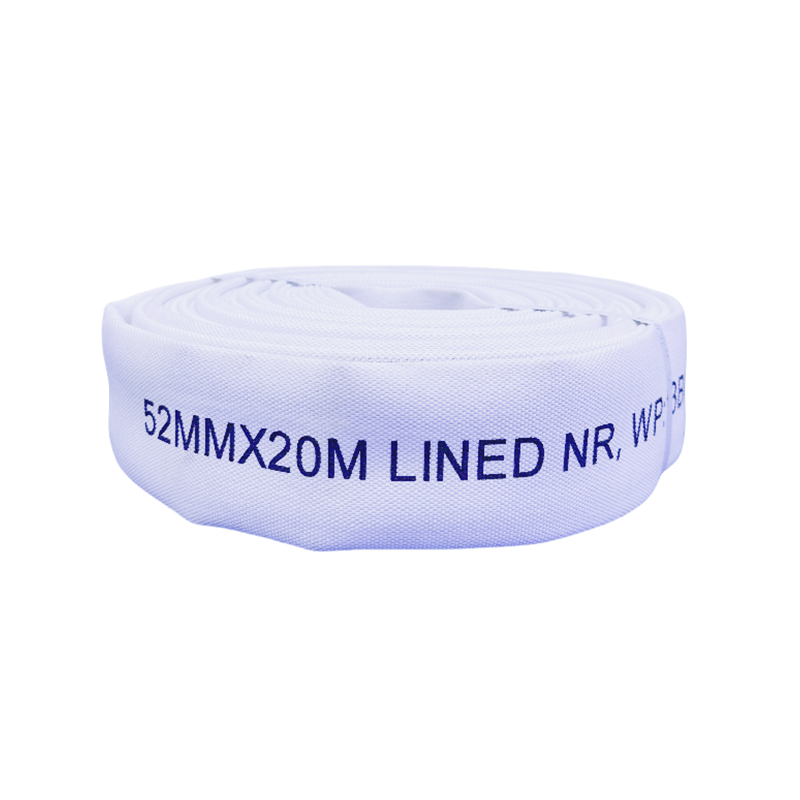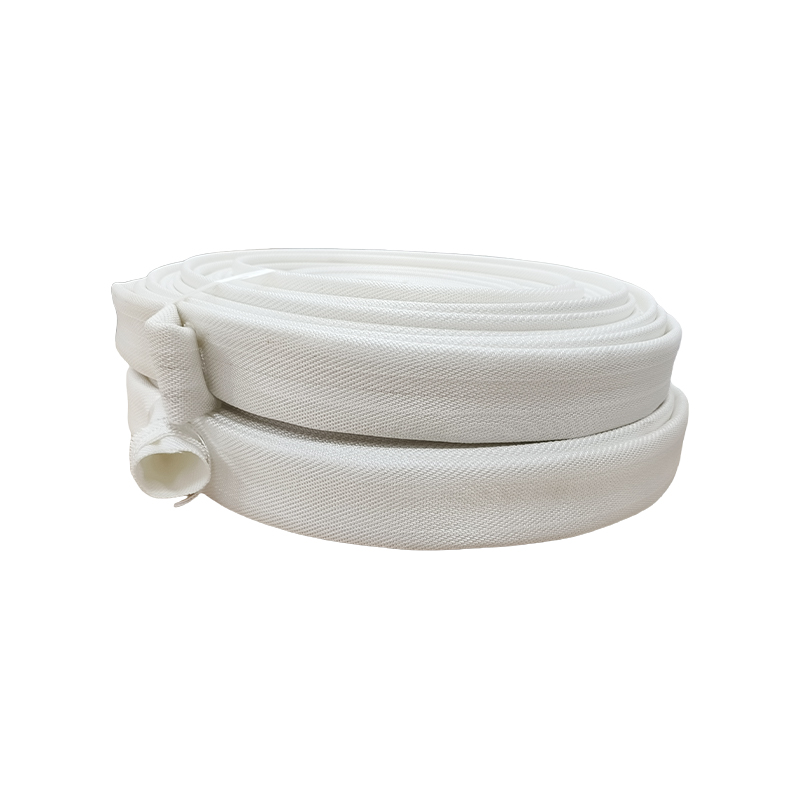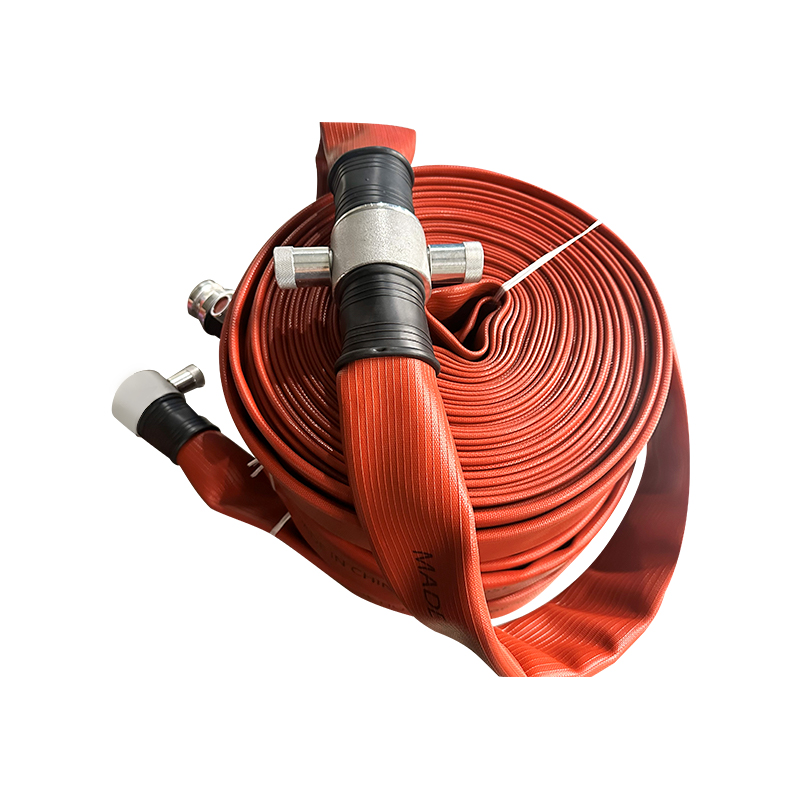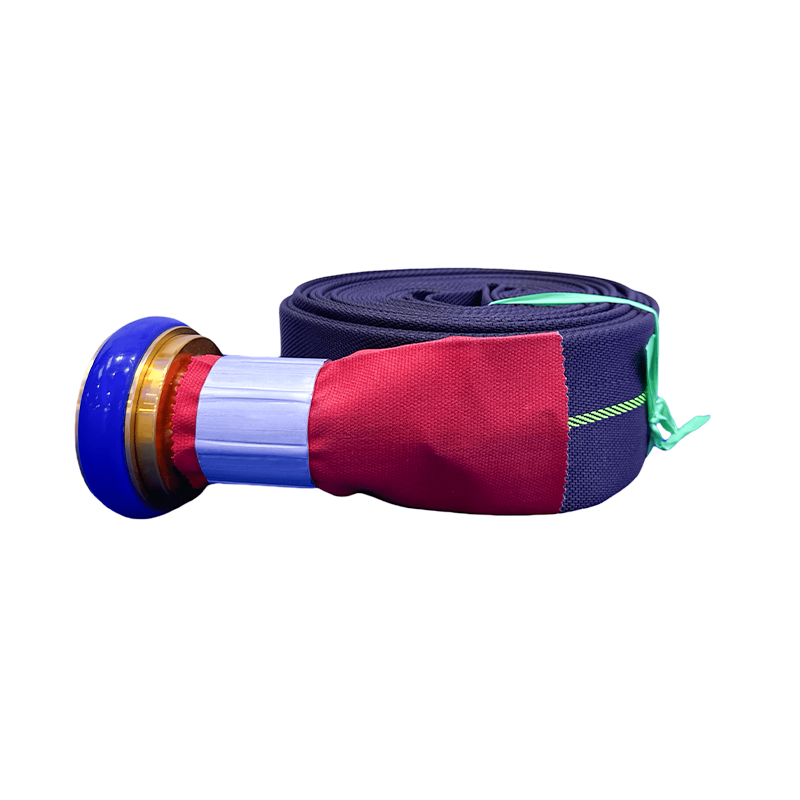- 1 Understanding Layflat Hoses: Structure, Materials, and Differences from Traditional Pipes
- 2 Layflat Hoses for Irrigation: Multiple Advantages for Efficient Water Saving
- 3 Layflat Hoses: An Ideal Choice for Multi-Field Irrigation and Water Delivery
- 4 Correct Installation, Use, and Maintenance of Layflat Hoses: Keys to Extending Lifespan
In agricultural production and landscaping, an efficient and reliable irrigation system is the cornerstone of healthy crop growth and landscape maintenance. Water is the source of life, and rational and effective utilization of water resources is crucial for increasing yield and saving costs. Traditional irrigation methods often face challenges such as water wastage, complex operations, and low efficiency.
In recent years, with the advancement of technology, the layflat hose, as an innovative irrigation tool, has played an increasingly important role in modern irrigation systems. With its unique advantages, it is gradually changing our understanding and practice of irrigation. The emergence of layflat hoses not only provides farmers and gardening enthusiasts with more convenient and economical solutions but also opens up new avenues for the optimized utilization of water resources.
This article aims to delve into various aspects of layflat hoses for irrigation, including their basic concepts, significant advantages, selection points, typical applications, and future development trends. Through detailed analysis, we hope to help readers fully understand the value of layflat hoses, thereby better applying them to actual irrigation needs and achieving sustainable development in agriculture and landscaping.
1" - 6" Canvas Hose PVC Lined Layflat Hose For Fire Extinguishing/Agricultural Irrigation
Understanding Layflat Hoses: Structure, Materials, and Differences from Traditional Pipes
To fully grasp the advantages of layflat hoses for irrigation, we first need a clear understanding of their basic concepts.
What is a Layflat Hose?
A layflat hose, as its name suggests, is a flexible pipe that lies flat when not filled with water. Unlike common rigid circular water pipes, its design allows it to be easily coiled and folded, greatly facilitating storage and transport. Its basic structure usually includes an inner layer, a reinforcement layer, and an outer layer. The inner layer is typically made of a smooth material to ensure smooth water flow and reduce friction loss; the reinforcement layer is crucial for the layflat hose's pressure-bearing capacity, usually woven or wound from polyester threads, high-strength fibers, or similar materials; the outer layer provides protection, allowing it to resist external abrasion, UV radiation, and chemical corrosion.
The main materials of layflat hoses vary widely, with each material having unique performance characteristics and suitable applications. Common materials include:
- PVC (Polyvinyl Chloride): Lower cost, good chemical resistance, but relatively average abrasion resistance and pressure resistance. Suitable for low-pressure, temporary irrigation.
- TPU (Thermoplastic Polyurethane): Excellent abrasion resistance, oil resistance, low-temperature resistance, and high elasticity. Strong pressure-bearing capacity and longer lifespan, but relatively higher cost. Suitable for high-intensity, harsh environment irrigation.
- Rubber: Excellent abrasion resistance and aging resistance, good flexibility, but heavier and relatively higher cost. Mostly used for industrial or special field water transport.
Differences Between Layflat Hoses and Traditional Rigid Pipes
Compared to traditional PVC rigid pipes or metal pipes, the characteristics of layflat hoses make them unique in the irrigation field:
- Advantages:
- Coilability and Lightweight: This is the most significant advantage of layflat hoses. When not in use, they can be coiled into compact rolls, taking up less space and being easy to transport, greatly reducing labor intensity.
- Convenient Storage: The flat design makes efficient storage of large quantities of hoses possible, especially suitable for seasonal use or scenarios requiring frequent relocation.
- Quick Installation: Laying and connecting layflat hoses are usually faster than rigid pipes, requiring no complex fittings or tools, significantly shortening the setup time for irrigation systems.
- Disadvantages:
- Pressure Limitations: Compared to rigid pipes, layflat hoses generally have lower pressure-bearing capacity for the same diameter and are not suitable for ultra-high pressure water delivery needs.
- Relative Vulnerability: Although the outer layer provides protection, compared to rigid pipes, layflat hoses are relatively more prone to damage from sharp object scratches, animal bites, or prolonged abrasion.
Understanding this basic knowledge will help us better evaluate the suitability of layflat hoses in specific irrigation scenarios and make informed choices.
Layflat Hoses for Irrigation: Multiple Advantages for Efficient Water Saving
The reason why layflat hoses hold a significant position in modern irrigation is due to their series of outstanding advantages. These advantages are not only reflected in operational convenience but also bring revolutionary changes in economic efficiency, functional versatility, and durability.
Efficiency and Convenience: A Time-Saving and Labor-Saving Irrigation Experience
- Rapid Deployment and Retrieval: A major highlight of layflat hoses is their extremely high deployment and retrieval efficiency. Compared to bulky rigid pipe systems, layflat hoses can be quickly laid out to the irrigation area and easily coiled up after the task is complete, greatly saving time and labor. This is particularly important for seasonal irrigation or scenarios requiring frequent water source relocation.
- Reduced Labor Costs: Due to their simple and quick operation, the use of layflat hoses significantly reduces the demand for manpower. One person can complete the laying and retrieval of a large number of hoses, thereby effectively saving operational costs and improving the overall economic benefits of agricultural production.
- Easy to Lay on Irregular Terrain: The flexibility of layflat hoses allows them to easily adapt to various complex and irregular ground environments, such as slopes, terraces, or areas with many obstacles. They can conform to terrain undulations, avoiding the limitations and additional engineering often required for laying traditional rigid pipes.
Economy: A Wise Long-Term Investment
- Lower Initial Investment: Compared to building complex rigid pipe irrigation systems, the procurement cost of layflat hoses is generally lower, making them particularly suitable for limited budgets or as temporary irrigation solutions.
- Low Transportation Costs: Since layflat hoses can be coiled and are lightweight, their transportation volume and weight are significantly reduced, thereby significantly lowering logistics costs.
- Space-Saving Storage: When not in use, layflat hoses can be compactly coiled for storage, maximizing storage space and solving the problem of traditional rigid pipes occupying large warehouses or sites.
Versatility: Adapting to Diverse Irrigation Needs
- Suitable for Various Irrigation Methods: Layflat hoses can be flexibly used with various irrigation systems such as drip irrigation, spray irrigation, and flood irrigation, whether as a main water delivery pipeline or as a branch line, they can play their role effectively.
- Applicable to Different Crops and Land Types: Whether for field crops, orchards, greenhouses, or golf courses and park green spaces, layflat hoses can be adjusted and applied according to actual needs, demonstrating strong adaptability.
Durability and Lifespan: Ensuring Reliable Operation
- UV Resistance, Abrasion Resistance, and Chemical Corrosion Resistance: High-quality layflat hoses typically use special materials and manufacturing processes, giving them excellent UV resistance, allowing them to withstand prolonged sun exposure without aging. Additionally, their outer layer material has good abrasion resistance, capable of withstanding certain ground friction. Furthermore, for pesticide or fertilizer solutions, quality layflat hoses also possess certain chemical corrosion resistance, ensuring safe water delivery.
- Maintenance and Care Recommendations: Although layflat hoses are relatively durable, proper maintenance and care can significantly extend their service life, such as avoiding sharp object scratches, promptly cleaning internal residues, and storing them properly when not in use.
In summary, layflat hoses for irrigation, with their unique advantages, are becoming an indispensable irrigation solution in modern agriculture and landscaping, providing users with efficient, economical, and convenient water use experience.
Layflat Hoses: An Ideal Choice for Multi-Field Irrigation and Water Delivery
Layflat hoses, with their excellent flexibility and versatility, have been widely used in various irrigation scenarios and play an important role in other related fields. Their adaptability makes them a powerful tool in modern agriculture and emergency water supply solutions.
Agricultural Irrigation: Improving Efficiency and Ensuring Harvests
- Field Crop Irrigation: For large-area crops such as corn, wheat, and rice, layflat hoses can serve as efficient main water delivery pipelines or branch lines, quickly transporting water to the fields for large-scale, high-efficiency irrigation operations. Their ease of laying and retrieval greatly saves labor and time costs.
- Orchard and Greenhouse Irrigation: In orchards and vegetable greenhouses, layflat hoses can flexibly weave among plants, cooperating with drip irrigation or spray irrigation systems to achieve precise irrigation, reduce water evaporation and waste, and provide the best growth environment for crops.
- Temporary Irrigation Systems: In cases of drought or when temporary water replenishment is needed, layflat hoses can quickly set up a temporary water supply network, meeting urgent irrigation needs and ensuring the stability of agricultural production.
Landscaping: Creating Beautiful Scenery
- Irrigation for Large Landscapes such as Parks and Golf Courses: Layflat hoses can be used for daily maintenance irrigation in large public green spaces, golf courses, and other venues. Their lightweight and easy-to-store characteristics make equipment management and operation more convenient.
- Home Garden and Lawn Irrigation: For general home users, layflat hoses are also an ideal choice. They are easy to store, do not take up much space, and are simple to install, effortlessly providing the necessary water for gardens and lawns.
Other Related Applications: Beyond Irrigation
- Temporary Drainage: In cases of flooding or waterlogging, layflat hoses can be quickly deployed as high-flow temporary drainage channels, effectively alleviating disaster conditions.
- Fire Water Supply (as Auxiliary): Although professional fire hoses are primarily used in the fire-fighting field, layflat hoses can also serve as auxiliary water delivery tools in certain situations, for example, when remote water supply is needed at a fire scene or when setting up temporary supply lines. It is worth noting that professional fire hoses and agricultural layflat hoses differ in material, pressure resistance, and standards, but their flat and coilable characteristics are common.
Professional Support: Taizhou Jun'an Fire Technology Co., Ltd.
When it comes to the manufacturing of layflat hoses, Taizhou Jun'an Fire Technology Co., Ltd. is a professional enterprise worth noting. Located adjacent to the world's largest trading port - Shanghai, the company specializes in the production of various products, including fire hoses, fire equipment, and emergency rescue equipment.
Taizhou Jun'an Fire Technology Co., Ltd. boasts modern and advanced production equipment and professional management personnel, and has gathered a group of senior technical and professional designers in this field. They not only design and manufacture rubber/PVC/PU lined fire hoses but also supply high-quality agricultural hoses, fully incorporating the advantages of similar products both domestically and internationally. This indicates that the company possesses profound technical expertise and rich experience in the manufacturing of fluid conveying hoses, and its agricultural hoses also feature high quality and reliability.
Furthermore, Taizhou Jun'an Fire Technology Co., Ltd. can provide OEM and ODM services, meaning they can customize production according to specific customer requirements. With reasonable prices and high-quality products, they have won the trust and support of customers and established long-term business relationships. The company is dedicated to providing first-class equipment and high-quality after-sales service to domestic and foreign customers. If you are interested in their products, please contact them or visit their company directly. Taizhou Jun'an Fire Technology Co., Ltd. looks forward to working with you to promote the application of layflat hoses in more fields.
Correct Installation, Use, and Maintenance of Layflat Hoses: Keys to Extending Lifespan
While layflat hoses are known for their convenience, correct installation, standardized use, and regular maintenance are crucial for ensuring their efficient operation and extending their lifespan. Neglecting these aspects can lead to hose damage, reduced irrigation efficiency, and even unnecessary economic losses.
Installation Steps and Precautions: Laying a Solid Foundation
The installation process for layflat hoses is relatively simple, but some details still require attention:
- Level Ground: Before laying the hose, try to choose a flat area free of sharp stones or debris. If the ground is uneven or has sharp objects, clear them as much as possible or place protective material under the hose to prevent the hose from being scratched or punctured.
- Correctly Connect Fittings: When connecting the layflat hose to a water source, pump, splitter, or sprinkler equipment, ensure that the connections are secure and sealed tightly. Use compatible fittings and clamps, and ensure they are installed correctly to prevent detachment or leaks under high pressure. Avoid overtightening, which can damage the hose or fittings.
- Allow for Expansion Space: The hose will expand and lengthen to some extent when pressurized with water. Therefore, allow a small amount of expansion space when laying to avoid overstretching and damage.
Daily Use Tips: Careful Operation to Prevent Damage
During daily use, following these recommendations can effectively protect your layflat hose:
- Avoid Excessive Bending and Kinking: When the layflat hose is in operation, it should be kept as straight as possible, avoiding sharp bends or kinks. Excessive bending can lead to localized high pressure, increasing the risk of bursting; kinking will obstruct water flow and affect water delivery efficiency.
- Regularly Check for Leaks and Damage: Before each use and during operation, carefully inspect the hose surface for cuts, abrasions, bulges, or leaks. If minor damage is found, repair it promptly; if the damage is severe, consider replacement to avoid affecting irrigation efficiency or wasting water resources.
- Avoid Vehicle Rolling: Although some high-quality layflat hoses have a certain degree of pressure resistance, it is still advisable to avoid heavy vehicles directly rolling over the hose, as this can damage the internal structure of the hose and reduce its lifespan.
Storage and Maintenance: Preparing for the Next Use
Proper storage and maintenance are crucial for ensuring the long-term use of layflat hoses:
- Clean and Dry Before Storing: After each use, completely drain the water from the hose and rinse its surface with clean water to remove dirt, chemical residues, or other debris. Ensure the hose is completely dry before coiling it for storage to prevent mold growth or material aging.
- Avoid Direct Sunlight and Extreme Temperatures: Prolonged exposure to strong direct sunlight can accelerate the aging of the hose material, making it stiff and cracked. Therefore, hoses should be stored in a cool, dry, and well-ventilated place. Also, avoid placing them in extremely high or low-temperature environments, as extreme temperatures can affect the hose's flexibility and strength.
- Neatly Coil: When storing, the hose should be neatly coiled into a reel, avoiding sharp folds or irregular stacking. This helps maintain the hose's original shape and prevents structural damage from long-term compression.
By strictly adhering to these installation, use, and maintenance guidelines, you will be able to maximize the performance advantages of your layflat hose, ensure the stable and efficient operation of your irrigation system, and significantly extend its service life, achieving greater economic benefits.


 en
en
 عربى
عربى









